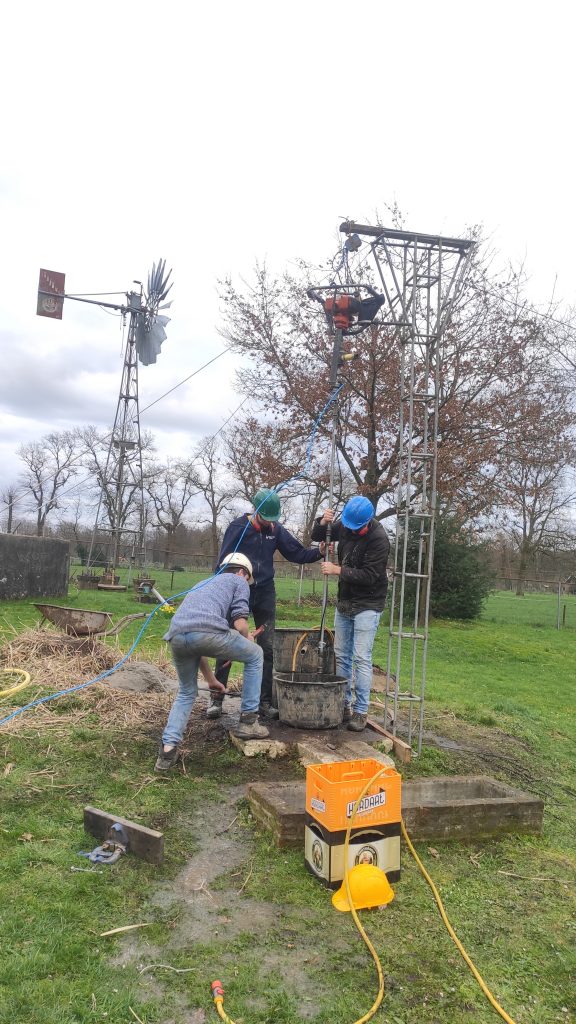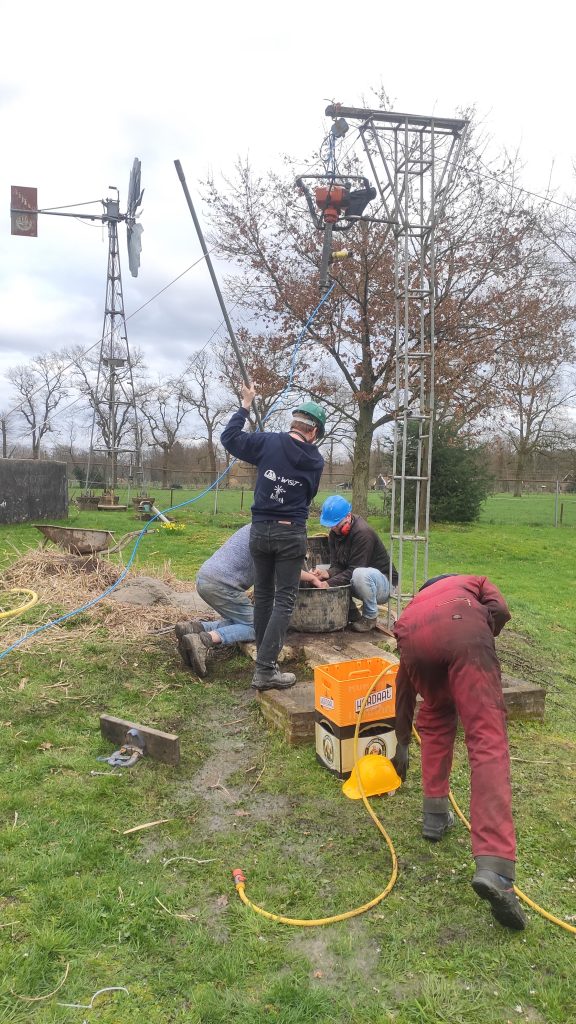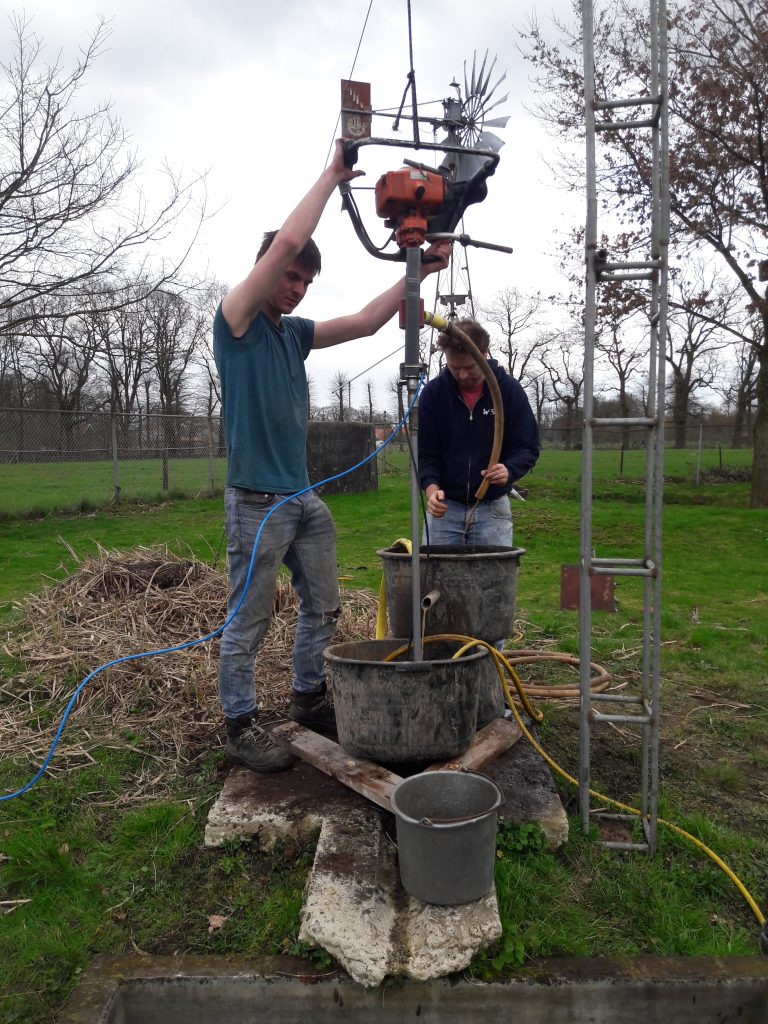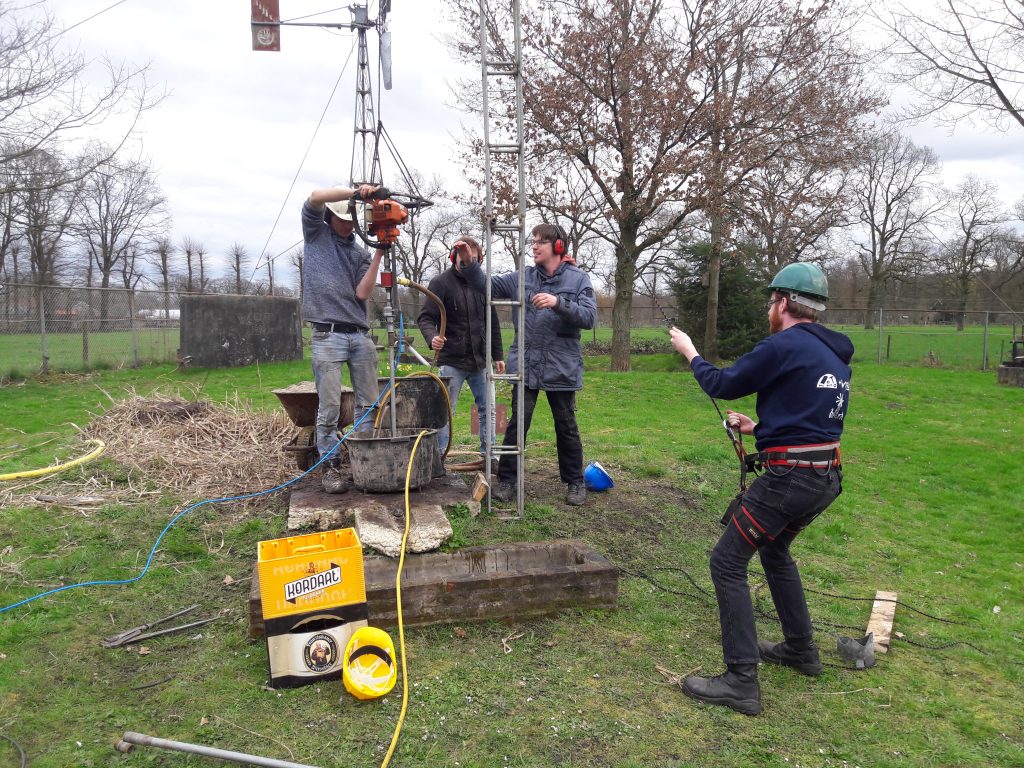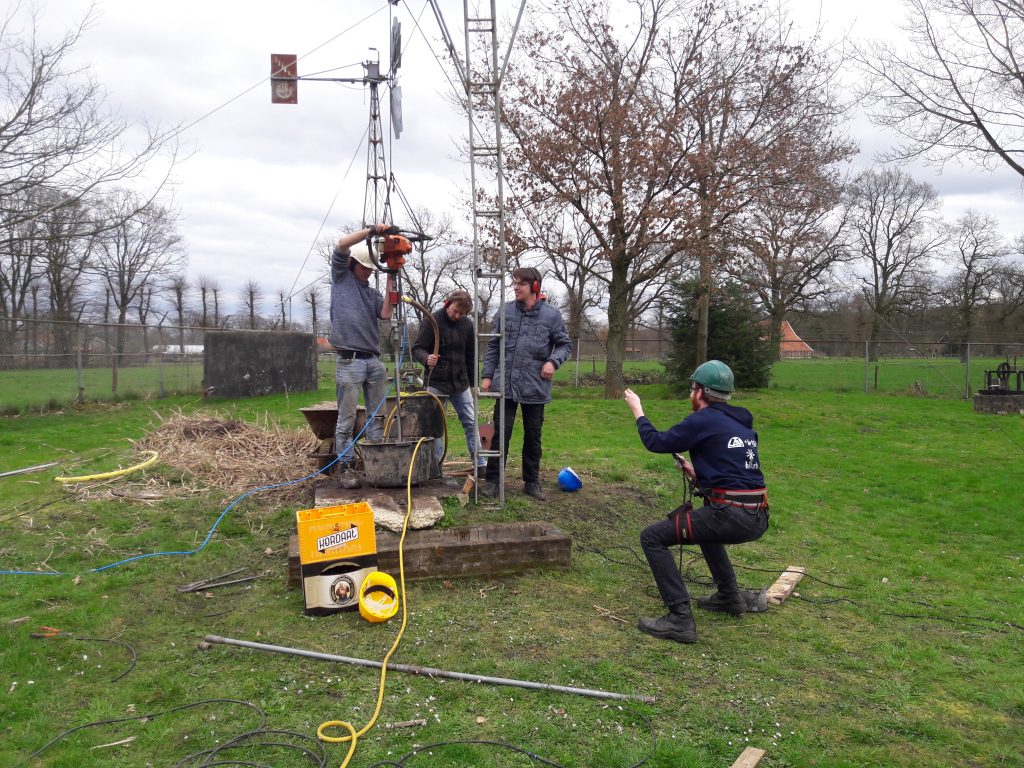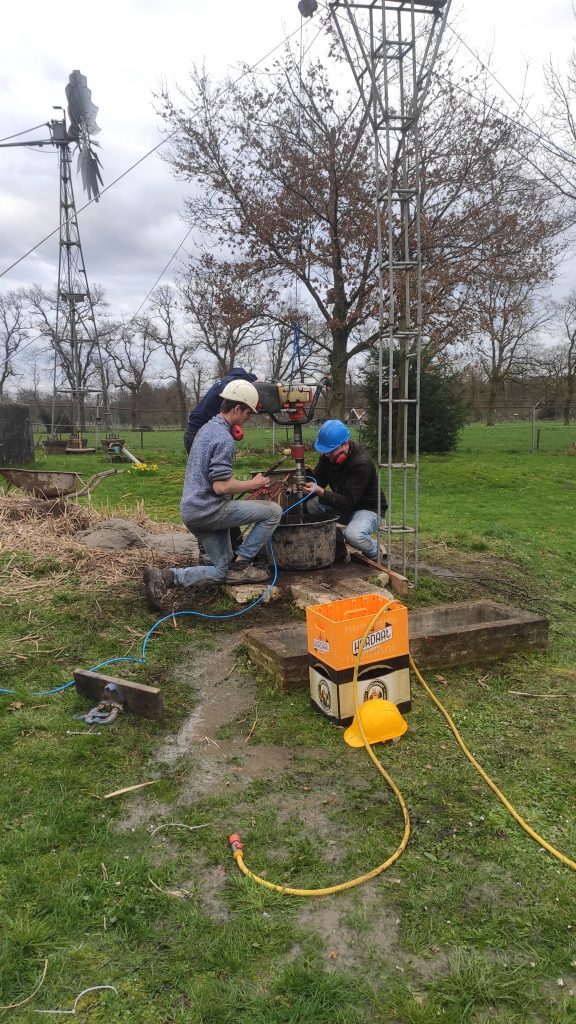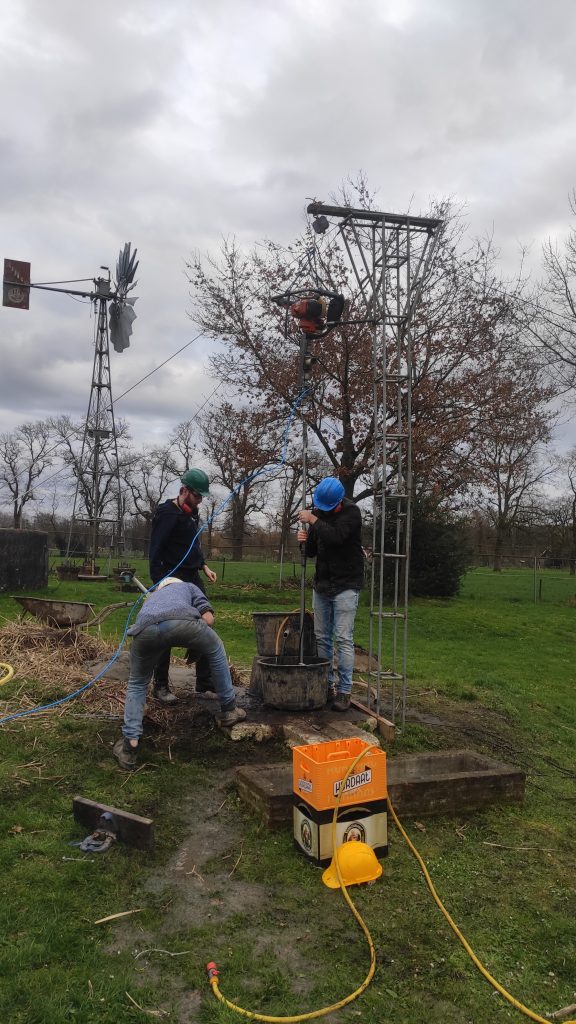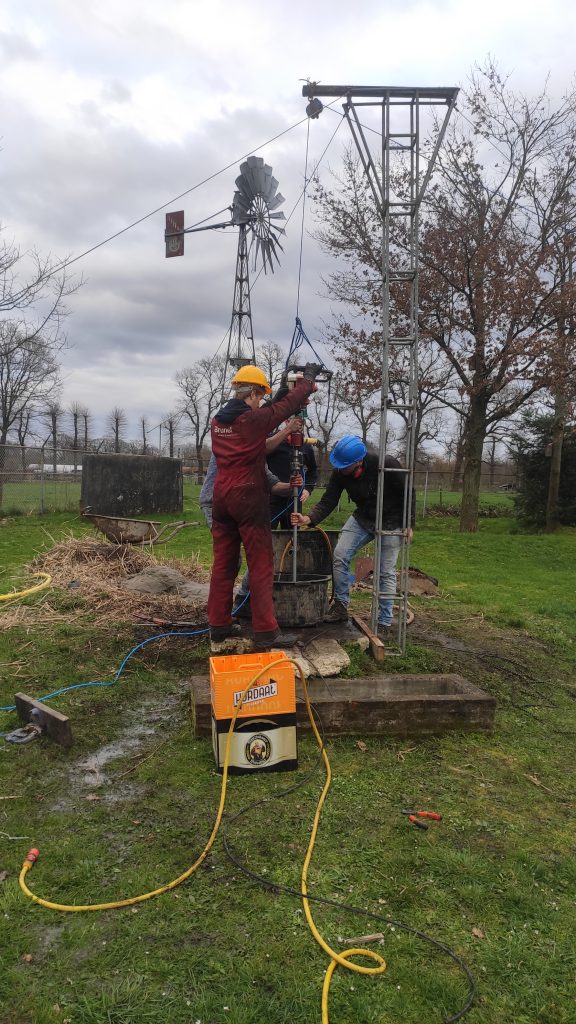A new experiment with airlift drilling is performed at the WOT. A motor of a petrol auger was used to drive the drill stem of the airlift drilling method. This produced a continuous rotational movement, so two couplings were required. One for the outlet of the drilling fluid and air mixture. Another one to couple the pressurized air hose to the drill shaft.
The main advantage of the system compared to the previous manual setup was the increased drilling speed. The maximal speed was measured to be 12 meter per hour. The record with manual shaft rotation was 7.5 meter per hour. However, the average speed of the whole borehole was only 5.4 meter
per hour. This is not a very large increase, compared to the 4.5 meter per hour during manually rotating in an earlier test.
This is mainly because changing of the pipes was more time consuming since the motor was attached to them. Also, starting of the petrol engine was hard, as the engine was at an unpractical location for starting and unwilling. The couplings for air and water, which were finished a day before the test, performed perfectly. The air coupling was not leaking up to a pressure of 8 bar. Thanks to Hedzer and Haye who helped to turn them to specifications.
There is the option to make a new test setup with a proper rig to guide the motor assembly. Also, an updated version of the air and water coupling can be made, where the length of the coupling assembly will be decreased (currently ~45cm long). A pipe clamp can be mounted on the rig, to hold the pipes during adding and removing. Changing pipes is then preferably done with three-meter pieces at the time, to minimize the time spend on it. The average speed of drilling can come very close to the 12 meter per hour (in Dutch soil) with these upgrades.

